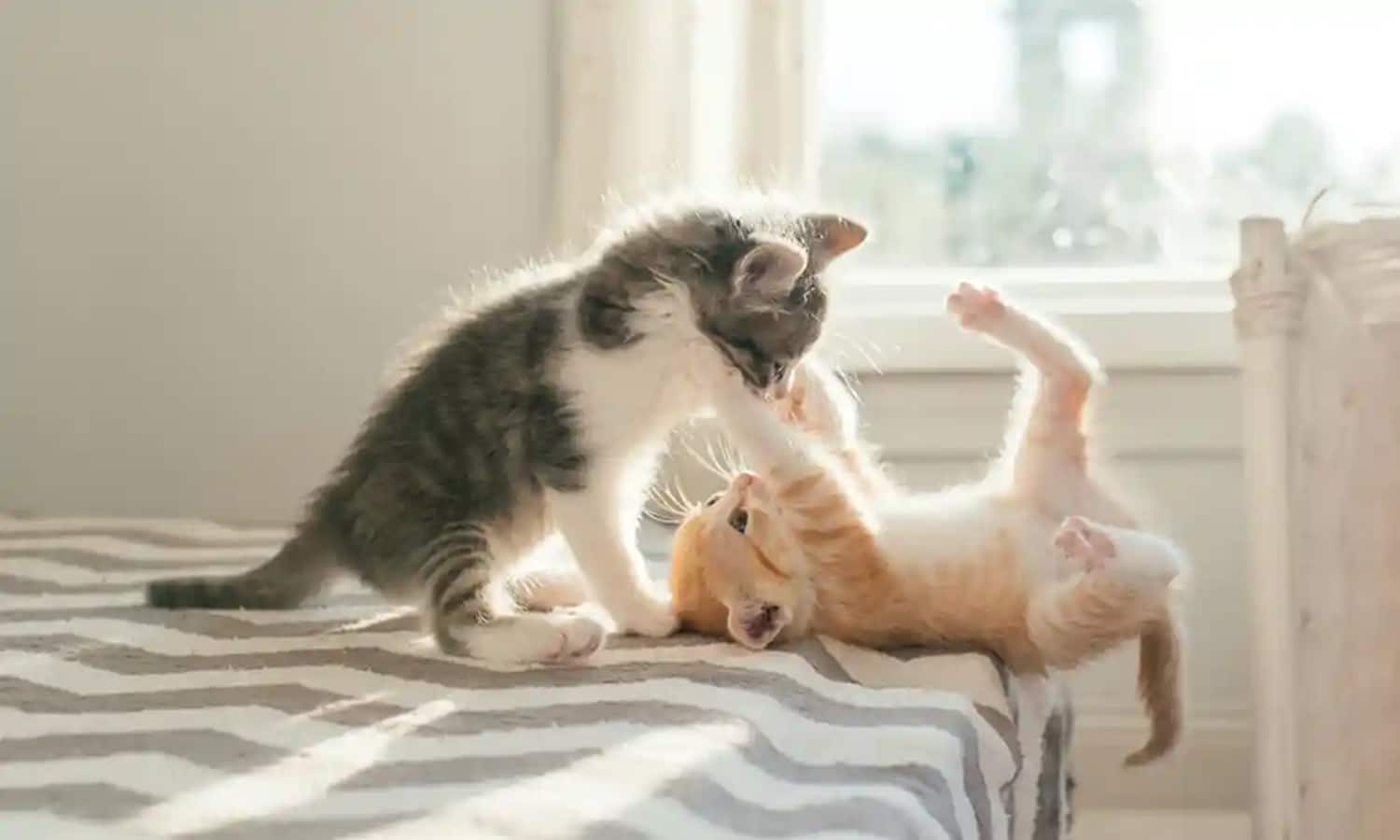Feline uncertain? Cats do give clues if the fur’s about to fly, study finds

Study of 105 pairs of interacting felines decodes the cat behaviour that puzzles humans – and flags up the unsubtle battle cry of claws and yowling.’
When cats get together it can be difficult to tell rough and tumble play from a full-blown scrap. Now researchers say they have decoded feline behaviour to help owners spot when the fur might be about to fly.
Dr Noema Gajdoš‑Kmecová, first author of the research from the University of Veterinary Medicine and Pharmacy, in Košice, Slovakia – a cat owner herself – said understanding feline interactions could be difficult. “Many owners are asking themselves the question, are these cats playing, fighting? Or what’s going on actually? We found out that there was actually very little scientific evidence to guide us in answering this question so we decided to go for it and study inter-cat interactions,” she said.
Writing in the journal Scientific Reports, Gajdoš‑Kmecová, and colleagues, describe how they examined the behaviour of 105 pairs of interacting domestic cats recorded on videos collected from YouTube. They also advertised for cat owners.
The researchers randomly selected 30% of the videos and analysed the cats’ actions to produce six behavioural categories, including wrestling, chasing, vocalisations, and motionless postures such as crouching. Each of the cats in the full sample were then assessed for these categories.
When the team looked at the frequency and duration of each of these six behavioural categories for the different cats they found they fell into three clusters.
Experts within the team then reviewed all 105 videos of 210 cats, labelling each interaction as either playful, agonistic, or intermediate. The team discovered that the three clusters of behaviour found in the initial analysis overlapped with the categorisation of the interactions made by the experts, suggesting certain patterns or types of feline behaviour could indicate whether cats were having a playful interaction or a scrap.
“When cats are young and when they are wrestling and not vocalising they are most likely playing,” the team write. But when there are extended inactive pauses, vocalisations and chasing, the cats may be in the midst of a fight.
Intermediate behaviour, the authors write, was associated with prolonged interactivity and included features associated with both playful interactions, such as lying belly up or pouncing, as well as aggressive behaviours, such as arching the back, and retreating.
However, Gajdoš‑Kmecová said even wrestling could occur in a positive and a negative context, so it was important to look at the overall pattern of behaviours and whether they were shown by both cats. For example, if claws and yowling were involved, a wrestle was unlikely to be a sign of play; and play was also unlikely if only one cat was attempting to engage in wrestling.
Gajdoš‑Kmecová said it was important to be aware that a playful interaction could switch into an intermediate or combative situation. “It’s very, very, dynamic,” she said. “When cats are getting noisy and are avoiding physical contact by
Gajdoš‑Kmecová added that the study showed feline interactions were not always a binary choice between playing and fighting, but that their behaviours could give helpful clues. “Maybe ask yourself are they playing, fighting, or is it something in between,” she said.
(Story source: The Guardian)





